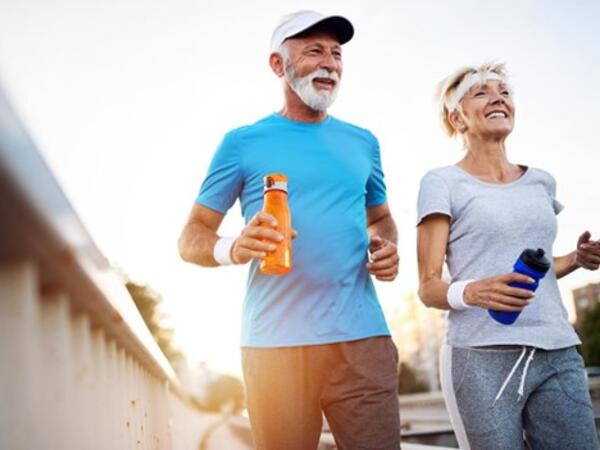
Event report
May 2023 - Fitness for Longevity
The May seminar on “Fitness for Longevity” was presented by Noah Arenson, physical therapist and one of the owners of Contact Physical Therapy. Noah started his presentation by telling us the importance exercise has on brain health. Exercise can increase the thickness of our cerebral cortex and improve the integrity of the white matter (the nerve fibers that connect areas of the brain’s nerve-cell-rich gray matter). It also promotes neuroplasticity, which is our brain’s ability to form new neural connections or our ability to learn throughout our life. Research has shown that exercise helps combat depression and for those who suffer from mild depression, it is the strongest, safest, most practical and most affordable treatment. It can also extend the lifespan of a healthy brain and delay the onset of neurodegenerative disorders like Alzheimer’s and Parkinson’s diseases. Our cardiovascular health is also impacted by exercise. With exercise, we optimize our oxygen uptake. Exercise works like a beta blocker and helps to increase high-density lipoprotein or HDL.
Noah then went on to introduce and discuss the “four pillars of exercise”. The first pillar is stability. Stability is the cornerstone upon which all exercise and movement relies. It’s what kicks in when you bend over to pick something up off the floor, or someone brushes against you in a crowded space. There are several ways stability can be measured but one of the simplest ones is the “timed up-and-go” test. In this test, you will sit in a chair, stand up and then walk for about 10 feet at your regular pace, then sit down again. If it takes 12 seconds or more to perform this test, you may be at a higher risk for fall. Noah then presented a short video on the types of exercises you can do to improve your stability.
The second pillar is aerobic efficiency. The goal for aerobic efficiency is achieving a healthy “Zone 2” level. At Zone 2 level, you should be able to walk and carry on a conversation without getting out of breath. You should be able to breathe easily through your nose and you should be able to get your heart rate up to about 70% of the realized maximum heart rate (subtract your age from 220 to get your beats per minute). Zone 2 exercise is a slower paced exercise like walking. Noah showed another video defining aerobic efficiency.
Resistance training is the third pillar of exercise. By definition, resistance training is any type of exercise that moves against resistance! It helps promote muscle development, improve posture and bone density. Types of resistance training exercises include squats, push-ups, pulls-ups, free weights, and machines. While aerobic exercise will improve the cardiovascular system, it does nothing to strengthen muscle development. The minimum effective dose to gain muscle is to do 4 sets per muscle being exercised per week. Again, Noah showed a video on what type of exercises can be included in resistance training.
Last, but not least, the fourth pillar is anaerobic training. While aerobic training can be achieved through walking for an extended time period, anaerobic training requires you to push yourself to a higher intensity for shorter time periods. This is also known as “Zone 5”. The example Noah gave was for someone who is capable of doing so, to jog for 10 minutes to warm up, then do four 4 minute intervals of faster running, with three 3 minute intervals of moderate jogging or fast walking and then a 5 minute cool down (4-3-4-3-4-3-4-5). You start in Zone 2, transgress to Zone 5, then back to Zone 2, then to Zone 5, etc. More videos were shown on how to achieve anerobic training.
Noah concluded his presentation by giving us a sample weekly exercise schedule. He stressed over and over that before beginning any exercise program, be sure to discuss your goals and intentions with your doctor! You need to be doing what is right and best for you in your current health condition to optimize effectiveness and keep risk of injury at a minimum. It is critical to work as a team.
